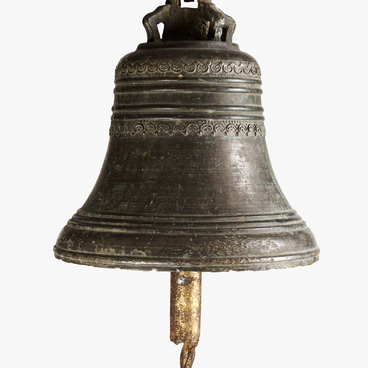The exhibition presents a measuring instrument — a balance scale in the form of a long four-sided rod with graduations on the upper edge. At one end of the rod there is a weight — a thickening in the form of a cone-shaped knob. Traditional steelyards have different shapes of knobs, such as spherical, polyhedron and so on. The rod has a movable part, to which a loop handle is attached on top with metal brackets and a hook for hanging the load from below. On the side edges of the rod there are inscriptions: “1907”, “06”, on the upper edge above the scale there is an illegible stamp.
Due to the fact that steelyards are a rather archaic form of scales, they often cannot be accurately dated. Therefore, the presence of the date of manufacture on the displayed device is a great luck. Modern people know the steelyard primarily as a measuring instrument for small weights, but some sources mention steelyards capable of measuring up to four poods (i.e. 65.5 kilograms) and even more. Some sources and literary works describe the unconventional use of steelyards by merchants: besides weighing goods, they were often used for self-defense against perpetrators. The main disadvantage of the traditional Russian steelyard was significant inaccuracy, which eventually led to a ban on the use of steelyards under Emperor Paul I.
This did not prevent the use of steelyards in the future, but only as a household instrument for measuring weight. They were cherished and passed on as heirlooms. It was a valuable gift. The steelyard, which had been in use for many centuries, contributed to Russian culture: there are proverbs, idioms, and riddles mentioning this device. For example, “Skinny himself, but the head is as heavy as a pud”. The origin of the more archaic name of lever scales in Russia — “kantar” or “kontar” — is associated with the measure of weight used in the Mediterranean countries and the Middle East — kntar. In different territories and at different times, it could measure from 45 to 300 kilograms. Nowadays it is virtually obsolete.
The item on display was purchased for the museum’s
collection in 1999.

